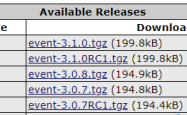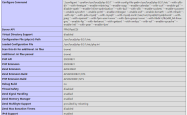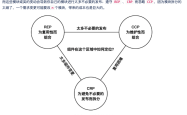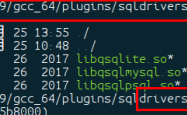Laravel的Auth验证Token验证使用自定义Redis的例子
背景
项目用户量逐渐增大,接口调用次数越来越多,所以决定使用Redis存token,缓解数据库压力
调研
在config/auth.php文件中发现用户的驱动使用的是EloquentUserProvider服务提供器,然后查找EloquentUserProvider.php 然后发现在vendor/laravel/framework/src/Illuminate/Auth文件下存在该文件
?| 1 2 3 4 5 6 7 8 9 10 11 12 13 14 15 16 17 18 19 20 21 22 23 24 25 26 27 28 29 30 31 32 33 34 35 36 37 38 39 40 41 42 43 44 45 46 47 48 49 50 51 52 53 54 55 56 57 58 59 60 61 62 63 64 65 66 67 68 69 70 71 72 73 74 75 76 | <?php namespace Illuminate\Auth; use Illuminate\Support\Str; use Illuminate\Contracts\Auth\UserProvider; use Illuminate\Contracts\Hashing\Hasher as HasherContract; use Illuminate\Contracts\Auth\Authenticatable as UserContract; class EloquentUserProvider implements UserProvider { /** * The hasher implementation. * * @var \Illuminate\Contracts\Hashing\Hasher */ protected $hasher ; /** * The Eloquent user model. * * @var string */ protected $model ; /** * Create a new database user provider. * * @param \Illuminate\Contracts\Hashing\Hasher $hasher * @param string $model * @return void */ public function __construct(HasherContract $hasher , $model ) { $this ->model = $model ; $this ->hasher = $hasher ; } /** * Retrieve a user by their unique identifier. * * @param mixed $identifier * @return \Illuminate\Contracts\Auth\Authenticatable|null */ public function retrieveById( $identifier ) { return $this ->createModel()->newQuery()->find( $identifier ); } ... /** * Retrieve a user by the given credentials. * * @param array $credentials * @return \Illuminate\Contracts\Auth\Authenticatable|null */ public function retrieveByCredentials( array $credentials ) { if ( empty ( $credentials )) { return ; } // First we will add each credential element to the query as a where clause. // Then we can execute the query and, if we found a user, return it in a // Eloquent User "model" that will be utilized by the Guard instances. $query = $this ->createModel()->newQuery(); foreach ( $credentials as $key => $value ) { if (! Str::contains( $key , 'password' )) { $query ->where( $key , $value ); } } return $query ->first(); } ... } |
实现代码
因为我们是需要在当前的Auth验证基础之上添加一层Redis缓存,所以最简单的办法继承EloquentUserProvider类,重写
retrieveByCredentials方法所以我们新建RedisUserProvider.php文件
?| 1 2 3 4 5 6 7 8 9 10 11 12 13 14 15 16 17 18 19 20 21 22 23 24 25 26 27 28 29 30 31 32 33 | <?php namespace App\Providers; use Illuminate\Auth\EloquentUserProvider; use Cache; class RedisUserProvider extends EloquentUserProvider { public function __construct( $hasher , $model ) { parent::__construct( $hasher , $model ); } /** * Retrieve a user by the given credentials. * * @param array $credentials * @return \Illuminate\Contracts\Auth\Authenticatable|null */ public function retrieveByCredentials( array $credentials ) { if (!isset( $credentials [ 'token' ])) { return ; } $token = $credentials [ 'token' ]; $redis = Cache::getRedis(); $userId = $redis ->get( $token ); return $this ->retrieveById( $userId ); } } |
然后在AuthServiceProvider.php文件下修改如下代码
?| 1 2 3 4 5 6 7 8 9 | public function boot(GateContract $gate ) { $this ->registerPolicies( $gate ); //将redis注入Auth中 Auth::provider( 'redis' , function ( $app , $config ){ return new RedisUserProvider( $app [ 'hash' ], $config [ 'model' ]); }); } |
修改config/auth.php用户的auth的驱动为redis。
后续
改完代码以后发现无法正常登录,一直提示用户或密码错误。。。然后看看了下用户认证方法是
?| 1 | auth( 'web' )->once( $credentials );然后看是在 |
| 1 | Illuminate\Auth\SessionGuard文件中用到了RedisUserProvider文件中retrieveByCredentials方法中对用户进行密码验证, |
于是修改RedisUserProvider文件
?| 1 2 3 4 5 6 7 8 9 10 11 12 13 14 15 16 17 18 19 20 21 22 23 24 25 26 27 28 29 30 31 32 33 34 35 36 37 38 39 40 41 42 43 44 45 46 47 48 49 | <?php namespace App\Providers; use Illuminate\Auth\EloquentUserProvider; use Illuminate\Support\Str; use Illuminate\Contracts\Auth\Authenticatable as UserContract; use Cache; class RedisUserProvider extends EloquentUserProvider { public function __construct( $hasher , $model ) { parent::__construct( $hasher , $model ); } /** * Retrieve a user by the given credentials. * * @param array $credentials * @return \Illuminate\Contracts\Auth\Authenticatable|null */ public function retrieveByCredentials( array $credentials ) { if ( empty ( $credentials )) { return ; } if (isset( $credentials [ 'phone' ]) && isset( $credentials [ 'password' ])){ // First we will add each credential element to the query as a where clause. // Then we can execute the query and, if we found a user, return it in a // Eloquent User "model" that will be utilized by the Guard instances. $query = $this ->createModel()->newQuery(); foreach ( $credentials as $key => $value ) { if (! Str::contains( $key , 'password' )) { $query ->where( $key , $value ); } } return $query ->first(); } $token = $credentials [ 'token' ]; $redis = Cache::getRedis(); $userId = $redis ->get( $token ); return $this ->retrieveById( $userId ); } } |
然后登录成功啦!皆大欢喜!
以上这篇Laravel的Auth验证Token验证使用自定义Redis的例子就是小编分享给大家的全部内容了,希望能给大家一个参考,也希望大家多多支持服务器之家。
原文链接:https://blog.csdn.net/ljwaheng/article/details/88547994
1.本站遵循行业规范,任何转载的稿件都会明确标注作者和来源;2.本站的原创文章,请转载时务必注明文章作者和来源,不尊重原创的行为我们将追究责任;3.作者投稿可能会经我们编辑修改或补充。










